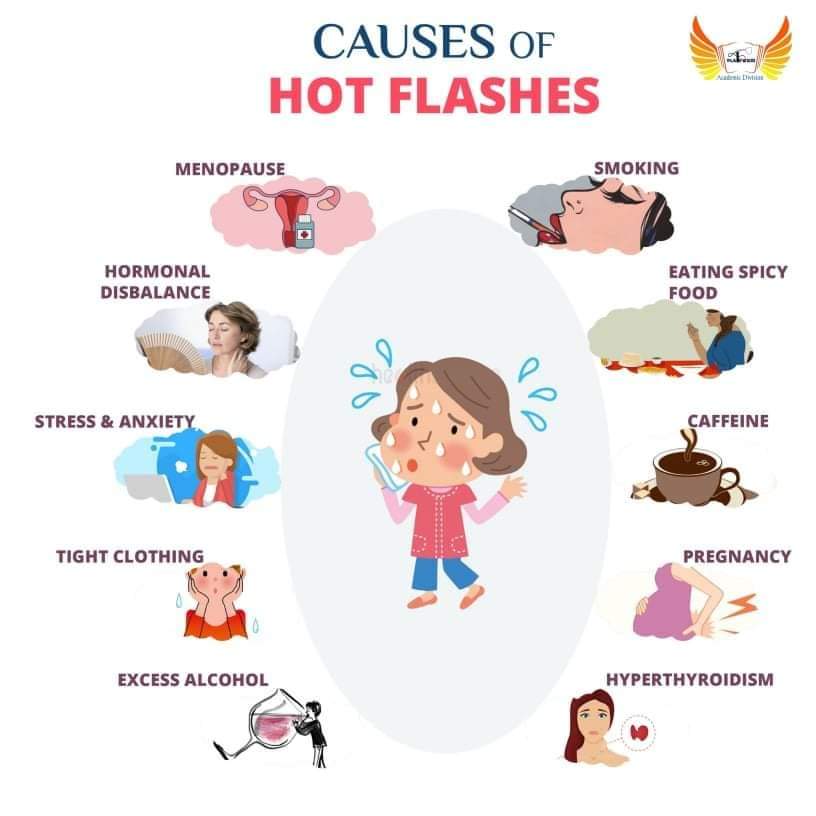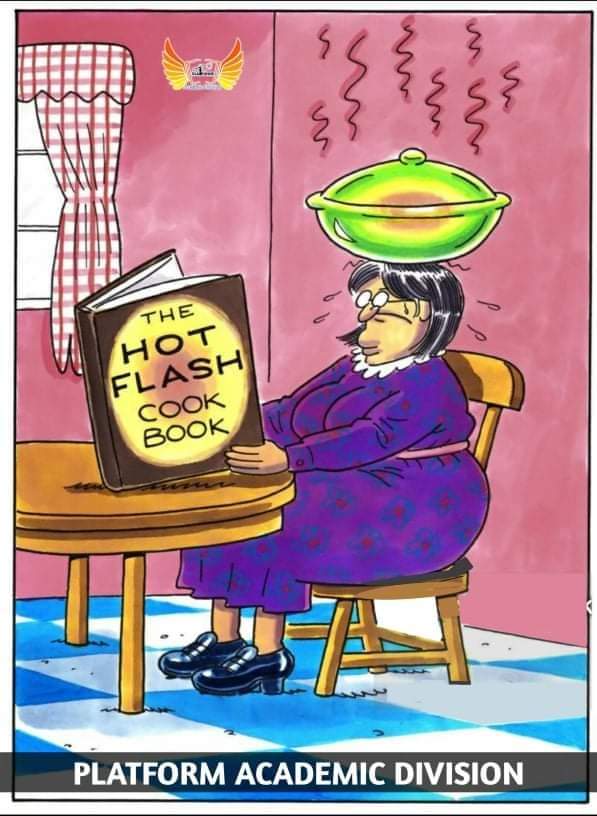Although other medical conditions can cause them, hot flashes most commonly are due to menopause — the time when menstrual periods become irregular and eventually stop. In fact, hot flashes are the most common symptom of the menopausal transition.
Most women will experience hot flushes when going through the menopause.
They’re often described as a sudden feeling of heat that seems to come from nowhere and spreads throughout the body.
It may be sweating, palpitations and flushing of the face.
Facts about Hot flushes of Menopause:
- Hot flushes are the most common complaint of perimenopausal and postmenopausal women.
- Episodic subjective sensation of intense warmth of upper body, last for 30 seconds – 5 minutes and may occur as frequently as every hour or several times per week.
- The episode usually ends in profuse sweating and cold sensation.
- Pathogenesis is defect in central thermoregulatory function related to fluctuation in estrogen concentration.
- Hot flushes occur in 70% women undergoing natural menopause and in almost all women who have undergone surgical menopause.
- 80% of women have symptoms lasting for at least 1 year. Only 25% women are still symptomatic at 5 years after final menstruation period.
- The differential diagnosis of Hot flushes include Thyrotoxicosis, Pheochromocytoma, Carcinoid tumor, Panic disorder, Diabetic neuropathy.

Non hormonal medications for Hot flushes of Menopause
- Other than HRT, a number of non hormonal medications can be used for Hot flushes of Menopause.
- Selective Serotonin Reuptake Inhibitors (SSRIs) e.g. Fluoxetine, Paroxetine, Venlafaxine, Escitalopram
- Centrally acting α blocker eg. Clonidine 0.1 mg/day. Adverse effects are dry mouth, postural hypotension.
- Gabapentin 300-900 mg/day in divided doses. Adverse effects are dizziness, peripheral edema.
- Vitamin E 400 IU/day
- Bioidentical hormone/Phytoestrogens (plant derived substances with estrogenic biologic activity)
- Herbal treatments include Chinese herbal medicine, Black cohosh, Ginseng, St. John’s wort and Ginkgo biloba.
- Opinions differ among different guidelines or regulatory bodies eg. USFDA approve only Paroxetine among non hormonal medications mentioned above.
- AACE (American Association of Clinical Endocrinologists) suggest judicious use of SSRIs, Clonidine, Gabapentin in selected patients in whom HRT is contraindicated but discourage use of Vitamin E, Bioidentical hormone and Herbal treatments.
Non pharmacological tips to reduce Hot flushes of Menopause
- Non pharmacological measures often ignored by physician should be considered for at least 3 months before starting medication.
- Reassurance that Hot flushes are usually harmless and will decrease with time.
- Avoid smoking, alcohol, spicy food, hot bath and caffeine which worsen Hot flushes.
- Keep your room cool and use fan, air conditioning. You can carry a portable fan.
- If Hot flushes more at night, drink small amounts of cold water or iced drinks before bed.
- If you feel a flush coming on, wash your face with cool water or use a cold gel pack.
- Wear loose layers of light cotton or silk clothes so you can easily take some clothes off if needed.
- Aerobic exercise and weight reduction for obese women improve Hot flushes.
- Try to relax as stress, anxiety increases Hot flushes.
- Try mind body practices like Yoga or other self-calming techniques.
Dr. M Saifuddin
MBBS (DMC, K-56)
FCPS (Medicine), MD (Endocrinology)
Assistant professor (Endocrinology)
Dhaka Medical College &
Author, FAQs in Diabetes, Endocrinology and Metabolism
Platform Academic / Ariful Islam Neloy

